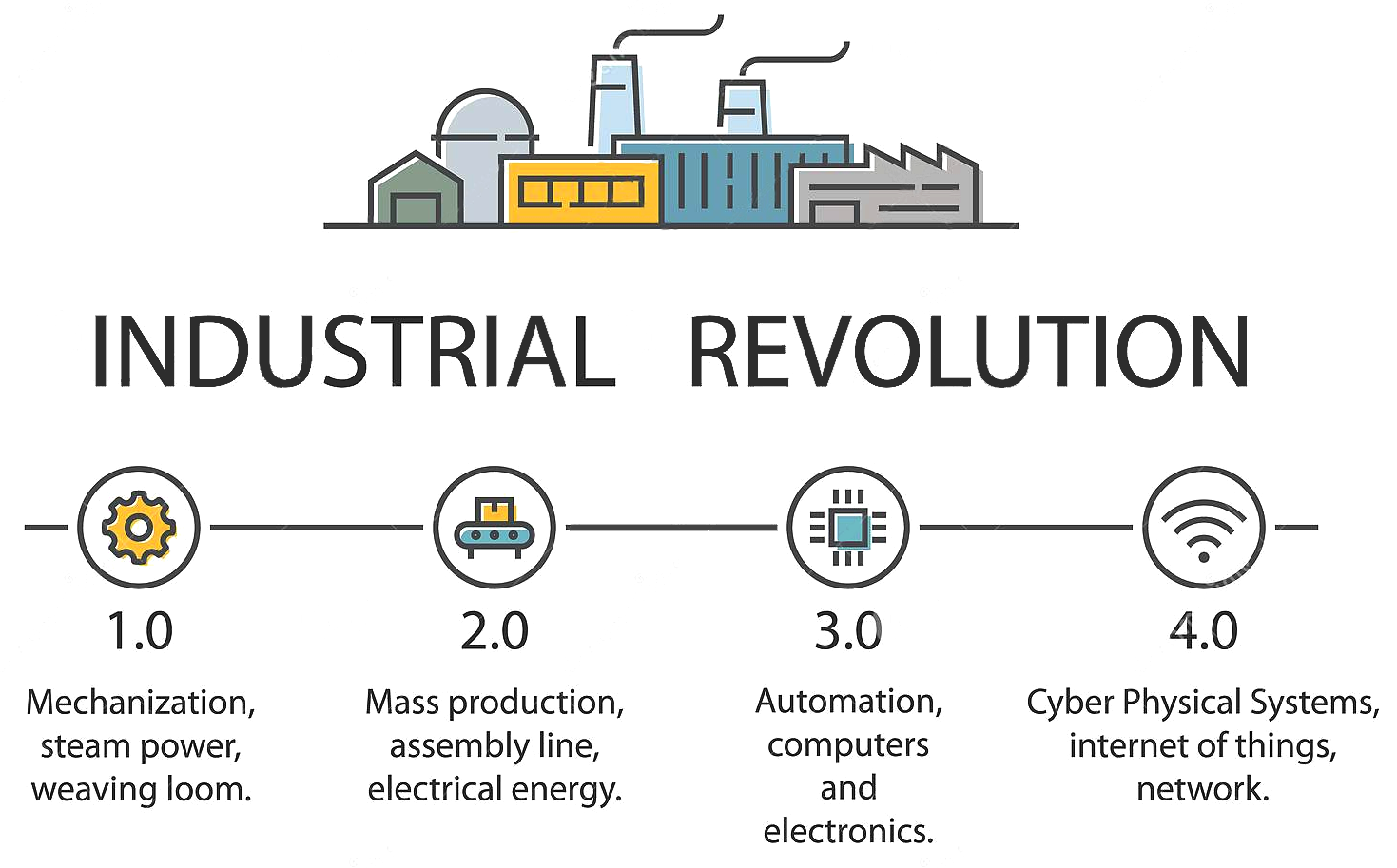Indian Economy
Samarth Udyog Bharat 4.0 Platform
- 25 Aug 2021
- 6 min read
Why in News
Recently, Central Manufacturing Technology Institute (CMTI) Bangalore, under the SAMARTH Udyog Bharat 4.0 Platform organized a webinar on “Expert Talks from Samarth Udyog Centres” to celebrate the Azadi ka Amrit Mahotsav.
- The objective was to listen to the experts of the Samarth Udyog Centres on the indigenous technology developments & the ways for collaborations in the domain of Smart Manufacturing & Industry 4.0.
- CMTI is a Research & Development organisation under the aegis of the Ministry of Heavy Industries, focusing on providing ‘Technology Solutions’ to the manufacturing sector and assisting technological growth in the country.
Key Points
- About:
- Smart Advanced Manufacturing and Rapid Transformation Hub (SAMARTH) -Udyog Bharat 4.0 is an Industry 4.0 initiative of the Department of Heavy Industry, under its scheme on Enhancement of Competitiveness in Indian Capital Goods Sector.
- The scheme on ‘Enhancement of competitiveness in the Indian Capital Goods Sector’ was notified in 2014 to encourage technology development and infrastructure creation.
- CMTI has established Smart Manufacturing Demo & Development Cell (SMDDC) as a Common Engineering Facility Centre (CEFC) to propagate and support the process of adoption of Industry 4.0 and smart manufacturing practices by the rapidly growing Indian manufacturing industry.
- Smart Advanced Manufacturing and Rapid Transformation Hub (SAMARTH) -Udyog Bharat 4.0 is an Industry 4.0 initiative of the Department of Heavy Industry, under its scheme on Enhancement of Competitiveness in Indian Capital Goods Sector.
- Industry 4.0:
- It refers to the fourth industrial revolution, which is the cyber-physical transformation of manufacturing.
- It has been defined as “a name for the current trend of automation and data exchange in manufacturing technologies, including cyber-physical systems, the Internet of things, cloud computing and cognitive computing and creating the smart factory.
- Benefits of Industrial Revolution 4.0:
- It will increase productivity, efficiency and quality in processes, greater safety for workers by reducing jobs in dangerous environments, enhance decision making with data-based tools, and improve competitiveness by developing customised products.
- Challenges:
- A Gap in Technical Skills:
- Since, the needs required of the workforce are all evolving so, only with the right workforce will business models be able to successfully implement new technology and maintain operations.
- Data Sensitivity:
- The rise in technology has also led to increasing concerns over data and IP privacy, ownership, and management.
- Innovation:
- The lack of separation between protocols, components, products, and systems is also a challenge as interoperability impedes companies’ ability to innovate.
- Security:
- Threats in terms of current and emerging vulnerabilities in the factory are another significant concern.
- The physical and digital systems that make up smart factories make real-time interoperability possible—however, it comes with the risk of an expanded attack surface.
- Handling Data Growth:
- As more companies become dependent on AI usage, companies will be faced with more data that is being generated at a faster pace and presented in multiple formats. To wade through these vast amounts of data, AI algorithms need to be easier to comprehend.
- A Gap in Technical Skills:
India’s Scenario
- Overview of India’s Current Potential:
- India has the third largest startup ecosystem in the world.
- It is the largest exporter of generic pharmaceuticals.
- When it comes to exports of cars, it does not even rank in the top 15.
- Overall, India's manufacturing sector makes up around 17% of the GDP.
- The services sector makes up over 65%.
- Related Initiatives:
- In 2018, the World Economic Forum (WEF) set up its Centre for the Fourth Industrial Revolution in India to work in collaboration with the GoI.
- The National Institute for Transforming India (NITI) Aayog is the designated nodal agency to interact with the WEF for elaborating the new policy frameworks for emerging technologies.
- The GoI has already made the enabling policy framework and set up incentives for infrastructure development on a PPP (Public Private Partnership) model.
- Samarth Udyog Bharat 4.0 is India's initiative to push for Industry 4.0 implementation with an aim to propagate technological solutions to Indian manufacturing units by 2025 through steps like awareness programme, training, demo centers etc.
- India’s National Manufacturing Policy (NMP) has been promulgated which aims at enhancing the share of manufacturing in GDP to 25% and Industry 4.0 is the only way ahead to achieve this task.
- Others:
- Make in India, Setting up of manufacturing clusters, improving ease of doing business, announcement of Production-linked Incentive (PLI) schemes, financial sector reforms, tax reforms, incentivizing R&D, large infrastructure development projects, power sector reforms, and strengthening the environmental, social, and corporate governance (ESG) in country.
- Initiatives such as 5G Trials and Digital India.
Way Forward
- In terms of Industrial Revolution 4.0, adopting Smart manufacturing, analytics and IoT will give a new lease of life to industrialisation in India.
- Apart from policy implementation hurdles, one major bottleneck is lack of skilled labour or fear of job losses owing to Robotics & Automation. A smart strategy to counter this is to upskill workers and millennials in these fields and create more jobs.





